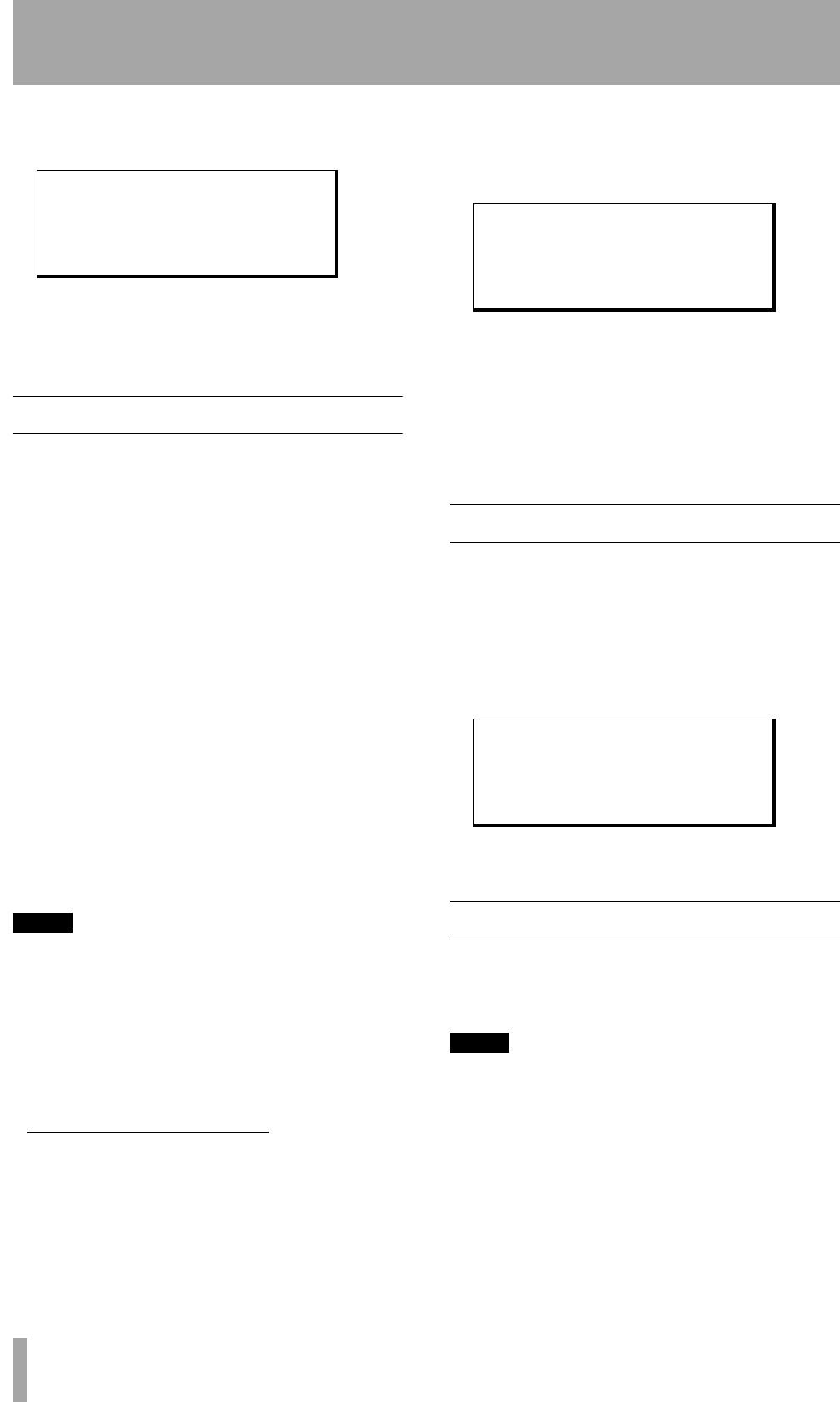
7 – Advanced operations–Dither
48 TASCAM DA-98HR
1 Enter menu group D, and move the cursor to
User bits:
2 The incoming user bits are displayed on the
bottom line of the screen. If there are no
incoming user bits, the screen displays dashes,
as shown above.
7.12 Dither
Dither is the technique of adding a known noise to
low-level signals, especially when converting from a
high number of bits (for instance 24 or 20 input bits,
as in the case of the DA-98HR) to a lower number
(for instance 16 when the DA-98HR is recording in
standard mode) to improve quantization.
Paradoxically, this technique of adding noise
removes quantization noise and distortion at low sig-
nal levels and improves the overall distortion
figures.
1
Though quantization noise is reduced, there is a loss
of a few dB in the signal-to-noise ratio. For this rea-
son, the DA-98HR does not implement dither as a
standard, but allows you to choose between no dither,
rectangular or triangular (the shapes refer to the dis-
tribution of values in the digital noise). Rectangular
gives about 3dB better signal-to-noise ratio than tri-
angular, but there is noise modulation, which may be
audible when recording and playing back low-level
program sources.
NOTE
S
We suggest using the confidence mode of off-tape monitor-
ing when recording using dither in order to be able to check
the effect instantly (5.3.2, “Using confidence mode”).
Dither can be turned on and off while recording is taking
place. However, there will probably be an audible change in
the sound quality. We suggest making a test recording
before a session using confidence mode. In this way you
will be able to make an instant assessment of the effects of
the different dither settings on your program material.
7.12.1 Selecting dither settings
1 Enter menu group 1, move the cursor to
Dither and press ENTER.
2 Use the § and ¶ keys to select the dither func-
tion you want (
Off, Rectangular or
Triangular), and press ENTER to con-
firm the setting.
If the setting is made to anything other than
off, the DITHER indicator below the tape
counter lights.
7.13 Output word length
The DA-98HR can output digital audio data at either
24 bit (if the recording has been made in HR mode)
or 16-bit resolution.
To select the output word length:
1 Select menu group B, move the cursor to
OutWdLen, and press ENTER:
2 Use the § and ¶ keys to select between
16
bit
(default) and 24 bit output.
7.14 Disabling automatic muting
By default, when there are many playback errors, the
output is muted. However, this can be changed so
that playback errors are audible.
NOTE
If errors are heard, the resulting noise may cause damage
to hearing, as well as monitoring equipment. Only disable
the error muting if you are really sure that you want to do
this.
Also note that this parameter is not backed up, or saved to
tape when other settings are saved (see 12.5, “Tape stor-
age of settings”). When the unit is powered up, or settings
are restored from tape, output is always muted on errors
unless explicitly set otherwise.
˘User bits InBdInfo
IoCkRange OutBdInfo
--:--:--:--
1.A full discussion of dither and other digital audio
techniques is outside the scope of this manual. How-
ever, a good starting point for learning about this, and
other aspects of digital audio, is John Watkinson’s The
Art of Digital Audio, pub Focal Press, 2nd edition
1995.
Dither
Rectangular
Output Word Length
16 bit


















